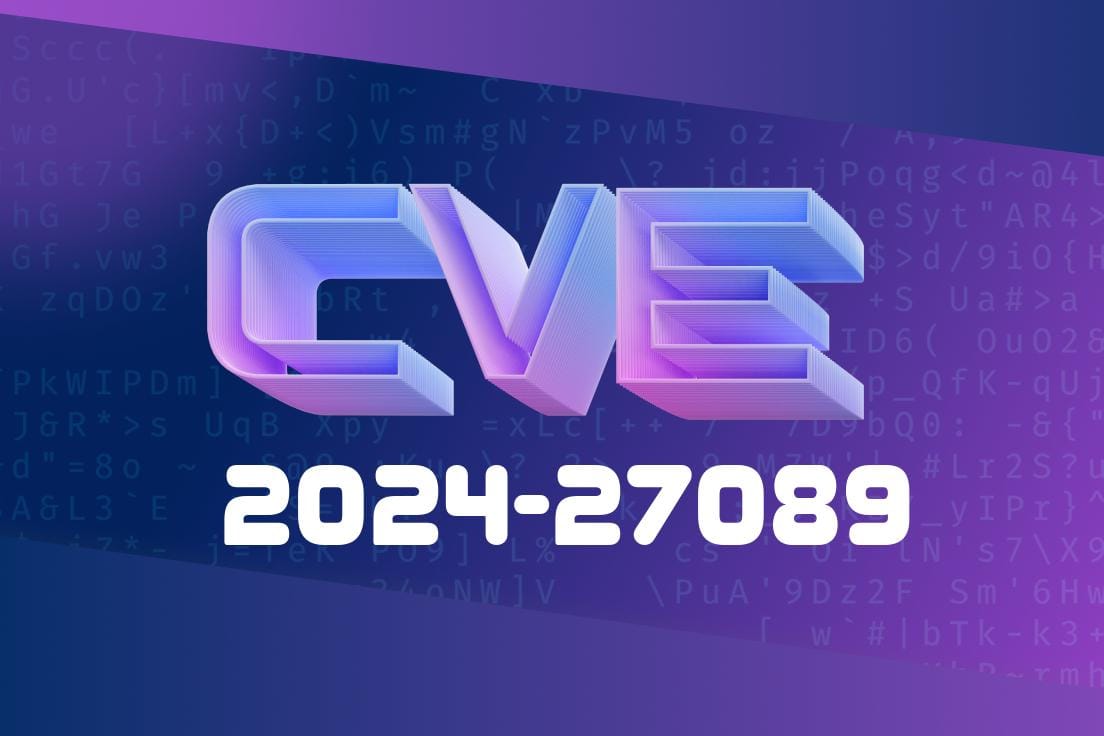In early 2024, security watchers spotted a new CVE entry: CVE-2024-27089. Shortly after, though, the record had a red flag: This candidate was withdrawn by its CNA (CVE Numbering Authority). That left many developers scratching their heads, wondering: What happened, and why should we care? In this post, I’ll break down the story behind CVE-2024-27089, explain what it means to withdraw a CVE, and clarify the steps that led to its rejection — with references and a peek at what you might see if you ever run into a withdrawn CVE yourself.
What is CVE-2024-27089?
At first, CVE-2024-27089 looked like any other security notification — but if you check the MITRE CVE directory or NVD record, you’ll see only a withdrawn notice. Here’s what MITRE says:
REJECT
Reason: This candidate was withdrawn by its CNA. Further investigation showed that it was not in the allowed scope of that CNA's CVE ID assignments.
That’s all — no technical details, no patches, not even a basic description of an affected product. So what’s behind this?
How Does a CVE Get Withdrawn?
CNAs (CVE Numbering Authorities) are organizations allowed to assign CVE numbers to new vulnerabilities. Sometimes, a CNA makes a CVE entry, but later discovers:
Or, it doesn’t apply to products the CNA is allowed to cover.
For CVE-2024-27089, the CNA assigned the number, but eventually ruled it was out of scope. Maybe someone reported a bug in a product the CNA doesn’t manage — let’s say, the CNA provides IDs for WidgetsCo, and the bug was in GadgetsCorp. Or maybe it just didn’t fit the definition of a vulnerability.
That means the CNA must withdraw the CVE and ask MITRE to reject it. MITRE adds the “REJECT” tag so anyone browsing the CVE lists will know not to waste their time (or panic) over this entry.
What Happens When You Search for a Withdrawn CVE?
Suppose you’re checking vulnerability scanners or Github security advisories and run across CVE-2024-27089. You’ll see something like this example code:
import requests
cve_id = "CVE-2024-27089"
url = f"https://cveawg.mitre.org/api/cve/{cve_id}";
response = requests.get(url)
data = response.json()
if data.get("cve", {}).get("REJECT", None):
print(f"{cve_id} is REJECTED: {data['cve']['REJECT']['description']}")
else:
print(f"{cve_id} may be a valid vulnerability.")
If you query MITRE or the NVD API, you’ll find out right away: this CVE is officially rejected.
Why is CVE Scope Important?
This incident highlights why scope matters. CVEs are just pointers — they help everyone speak the same language about security risks. But if CNAs start publishing entries about things they don’t control, we’d end up with duplicates, confusion, or worse: missing the real vulnerabilities. The CVE Program has strict rules about who can use which IDs for which products.
Rejected CVEs aren’t vulnerabilities.
Being rejected means there’s no confirmed public risk. You *don’t* need to block, patch, or panic.
Before adding a CVE to your blocked apps or patch list, double-check links like
- MITRE’s official CVE list,
- NVD Reports,
The vendor’s own advisory page.
Understand your supply chain.
Many tools scrape CVE feeds for new alerts. If a CVE is REJECTED, good tools will skip it — but some may still flag them in error.
References and More Reading
- CVE-2024-27089 on MITRE
- NVD CVE-2024-27089 record
- CVE Program: How to request and assign CVEs
- Who can be a CNA? — List of partners
- What does “REJECT” mean for a CVE?
Final Thoughts
CVE-2024-27089 is a great example of why the security ecosystem needs clear rules and accurate records. While it never became an actionable vulnerability, its story helps keep CVE data clean and trustworthy. If you run into a CVE you don’t recognize — or one that’s marked as REJECT — a little investigation can save you a lot of wasted worry.
If you want to learn more about withdrawn and rejected CVEs, check out the official CVE FAQ.
*This post is exclusive and hands-on for developers, blue teamers, and security enthusiasts. Stay sharp, and always double-check before reacting to new vulnerability IDs!*
Timeline
Published on: 02/26/2024 20:19:06 UTC
